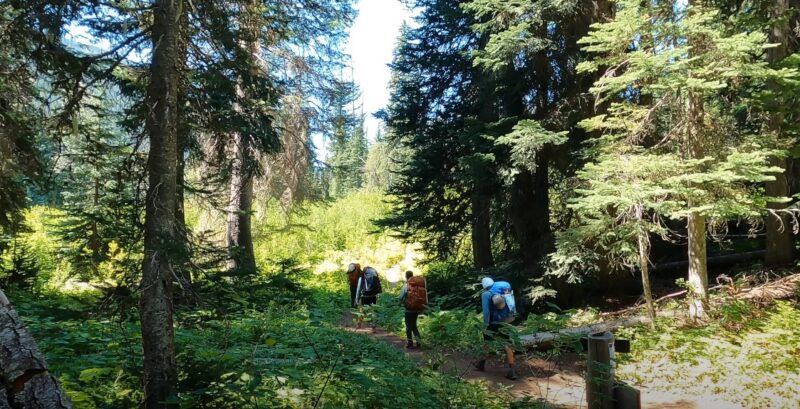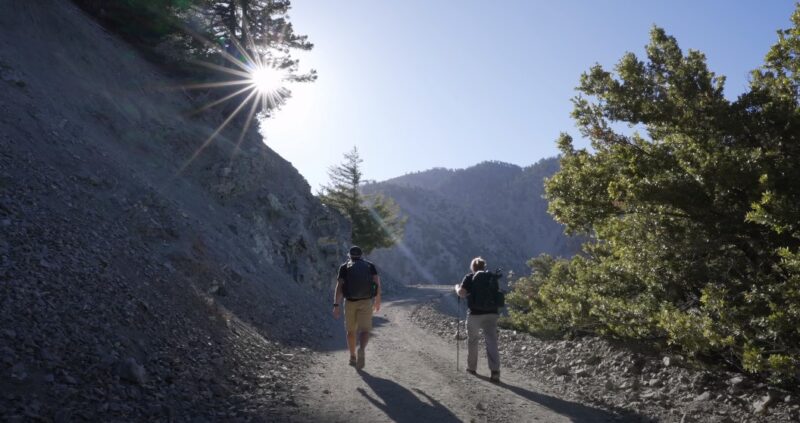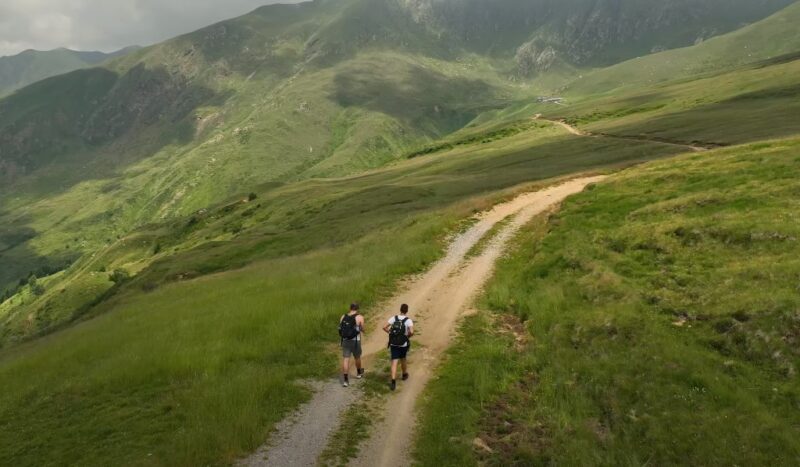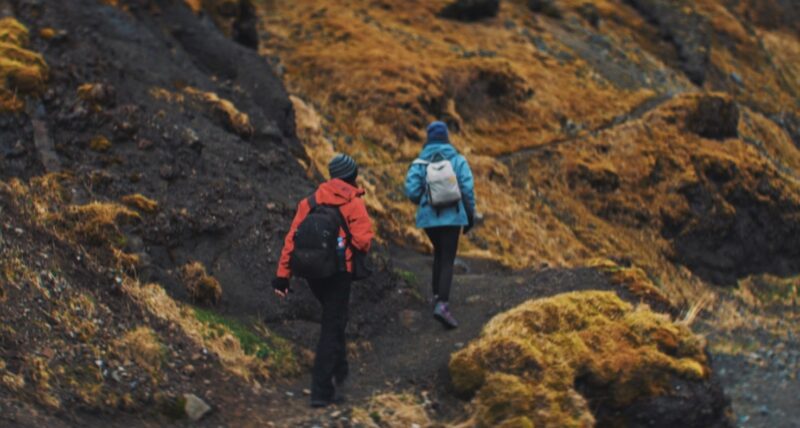In the wilderness, where the majesty of nature meets the thrill of exploration, hikers and outdoor enthusiasts often find themselves sharing the landscape with the local wildlife, including bears. Among the myriad strategies employed to ensure safety, the use of cowbells, also known as bear bells, stands out as a unique method aimed at reducing surprise encounters between humans and bears.
This article looks into the nature of cowbells, explores bear behavior and habitat, and outlines the purpose and scope of our discussion on this intriguing subject.
Key Takeaways
- Effectiveness Debated: Cowbells, used to alert wildlife of human presence, have been debated about effectiveness. While traditional and anecdotal evidence supports their use, some information suggests bears may not significantly respond to these sounds, with noises like human voices being more effective.
- Safety Enhancement: Despite their debated effectiveness, cowbells can enhance safety by signaling hikers’ presence to other hikers and dogs, although they should not be the sole safety measure employed.
- Cultural and Ethical Considerations: The use of cowbells intersects with cultural traditions in some regions, such as the Swiss Alps, and raises ethical considerations about creating a false sense of security among hikers.
- Comprehensive Safety Strategy: Experts recommend cowbells as part of a comprehensive approach to bear safety, which includes making noise, carrying bear spray, and being aware of surroundings, rather than relying on cowbells alone.
- Environmental and Terrain Impact: The effectiveness of cowbells can vary depending on terrain and environment, with their sound carrying differently in dense forests versus open areas. Hikers are advised to attach cowbells in a way that maximizes sound production to effectively alert wildlife.
What Is the Role of Clang?
Cowbells act like an early warning system in the wilderness. They make ‘clang’ sounds that travel far, telling bears and other wildlife that humans are around.
This helps to lower the chances of surprising these animals, which can be dangerous. This idea has been around for a long time and comes from both tradition and practical use.
However, not everyone agrees on how effective cowbells are. In places known for grizzlies and black bears, like Yellowstone Park or Natural Bridge State Resort Park, the opinions of locals and visitors on using cowbells can differ a lot.
We’re set to explore the good and bad about cowbells, look at other ways to avoid wildlife surprises, and share helpful tips for those walking in bear territories.
Is That Helpful?

There’s a lot of discussion about whether cowbells help to keep bears away. Some people think bears don’t mind the noise because they’re used to hearing lots of different sounds where they live.
Stories from Alaska and the Rockies back this up, showing that bears often ignore bell sounds. But, sounds like breaking sticks or human voices do get their attention right away.
Still, some people say cowbells are useful. They argue that cowbells help let other hikers and dogs know where you are, making it safer for everyone.
Are There Any Alternative Methods?
When we compare cowbells with other ways to avoid surprising wildlife, it’s clear each method has its place. Bear horns can make a very loud noise that gets animals’ attention from far away.
But, you might not want to use them all the time. Talking or making noise now and then feels more natural and might be better at making bears notice you.
How Do They Affect the Animals Living in Surrounding?

The place you’re in — like how windy it is or what the terrain is like — can change how well you can hear cowbells. These things can make the sound go further or make it harder to hear.
Cowbells have been used for a long time in the mountains of Switzerland to help keep track of livestock. This shows they could be useful for hikers and their dogs in similar rough areas.
What Are the Ethical Considerations?
While cowbells serve as an auditory signal to wildlife, there’s a growing conversation around the ethical implications of their use. A significant concern is that cowbells might give hikers a false sense of security, leading them to believe they are completely safe from wildlife encounters.
This overconfidence could potentially decrease vigilance and discourage hikers from engaging in other essential bear-aware practices.
How Do Cowbells Affect Different Cultures?
The use of cowbells also intersects with cultural considerations in various regions known for bear populations. For instance, in the Swiss Alps, cowbells have a long-standing tradition in pastoral life, not just as a tool for managing livestock but also as a symbol of alpine culture.
Introducing cowbells as a bear deterrent in such areas may align well with local customs, enhancing acceptance among the local populace. However, in regions where cowbells are not traditionally used, their introduction to wildlife deterrence could be met with skepticism or even resistance.
What Are Some Common Myths and How Can We Debunk Them?

They’re not the perfect solution, but they’re part of a bigger plan for staying safe around wild animals.
FAQ
How does terrain affect cowbell use?
Cowbells can be used in various terrains, but their effectiveness may vary depending on the environment. In dense forests or areas with heavy underbrush, the sound may not travel as far. Conversely, in open areas or where sound can echo, such as in mountains or valleys, cowbells may be more effective in alerting wildlife to human presence.
Do cowbell sounds vary by type and impact?
Yes, cowbells come in various sizes and designs, which can produce different pitches and volumes of sound. The effectiveness of a cowbell in deterring wildlife might vary based on the sound it produces, with some tones potentially being more noticeable to bears and other animals than others.
What do experts say about cowbells and other bear deterrents?
Wildlife experts often recommend using cowbells as part of a comprehensive approach to bear safety. This includes making noise, especially in areas with limited visibility, carrying bear spray as a deterrent, and being aware of your surroundings. Cowbells should not be the sole method relied upon but rather one of several precautions.
Are cowbells allowed in a national park?
Some national parks or wildlife reserves may have specific guidelines or restrictions on the use of noise-making devices, including cowbells, to minimize disturbances to wildlife or other visitors. It’s essential to check the regulations of the area you plan to visit beforehand.
Are there any long-term effects of cowbell use on wildlife?
There’s ongoing research and debate about the long-term impact of human-made noises, including cowbells, on wildlife behavior. Some concerns include the possibility of habituating animals to human presence, which could potentially reduce their natural wariness and lead to more frequent encounters.
Cowbells and hiking tips: how to wear them correctly?
Hikers should attach cowbells to their backpacks or belts in a way that allows them to clang freely and produce sound as they move. The bell should be positioned to avoid being muffled by gear or clothing, ensuring it can be heard at a distance to alert wildlife of human presence effectively.
Final Words
The use of cowbells as bear deterrents in wilderness exploration presents a nuanced debate over their effectiveness, cultural relevance, and ethical implications. Despite traditional support, some evidence questions their efficacy compared to direct sounds like human voices.
However, cowbells enhance safety by alerting others, forming part of a broader safety approach that considers wildlife behavior and cultural practices. This discussion emphasizes the need for adaptable safety measures across terrains and for balancing human presence with environmental care.
Employing cowbells with other precautions promotes safer, more conscious engagement with nature.
